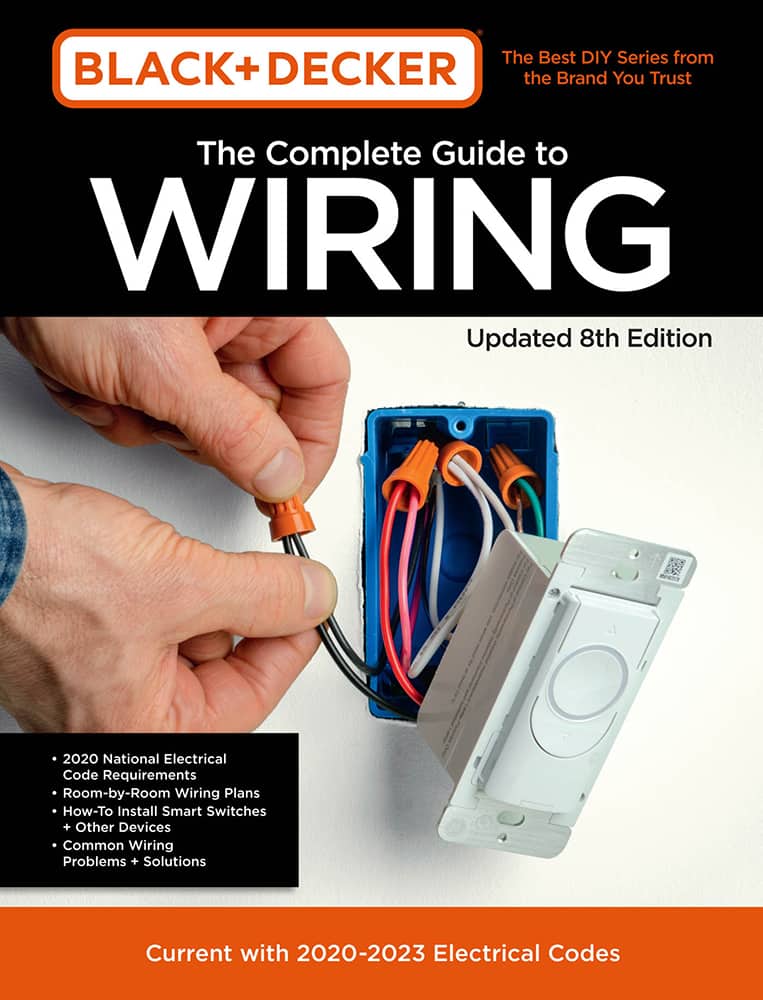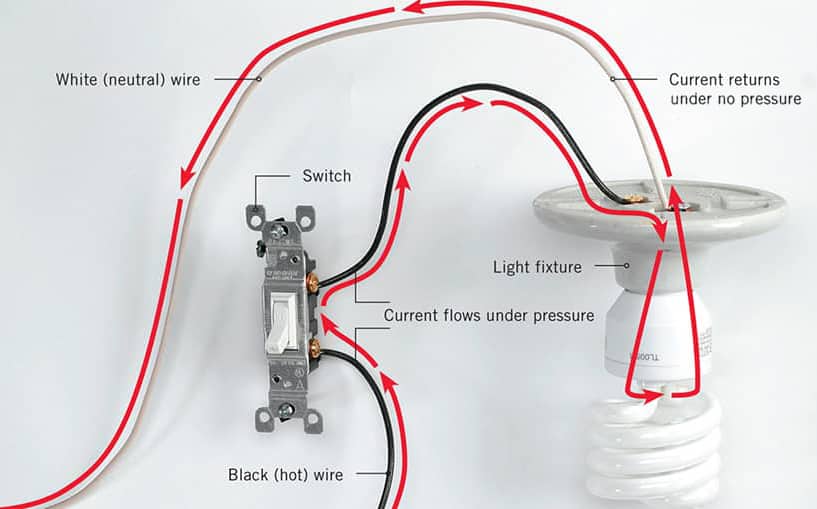Editors of Cool Springs Press - The Complete Guide to Wiring
Here you can read online Editors of Cool Springs Press - The Complete Guide to Wiring full text of the book (entire story) in english for free. Download pdf and epub, get meaning, cover and reviews about this ebook. year: 2021, publisher: Cool Springs Press, genre: Science. Description of the work, (preface) as well as reviews are available. Best literature library LitArk.com created for fans of good reading and offers a wide selection of genres:
Romance novel
Science fiction
Adventure
Detective
Science
History
Home and family
Prose
Art
Politics
Computer
Non-fiction
Religion
Business
Children
Humor
Choose a favorite category and find really read worthwhile books. Enjoy immersion in the world of imagination, feel the emotions of the characters or learn something new for yourself, make an fascinating discovery.

- Book:The Complete Guide to Wiring
- Author:
- Publisher:Cool Springs Press
- Genre:
- Year:2021
- Rating:3 / 5
- Favourites:Add to favourites
- Your mark:
- 60
- 1
- 2
- 3
- 4
- 5
The Complete Guide to Wiring: summary, description and annotation
We offer to read an annotation, description, summary or preface (depends on what the author of the book "The Complete Guide to Wiring" wrote himself). If you haven't found the necessary information about the book — write in the comments, we will try to find it.
Editors of Cool Springs Press: author's other books
Who wrote The Complete Guide to Wiring? Find out the surname, the name of the author of the book and a list of all author's works by series.
The Complete Guide to Wiring — read online for free the complete book (whole text) full work
Below is the text of the book, divided by pages. System saving the place of the last page read, allows you to conveniently read the book "The Complete Guide to Wiring" online for free, without having to search again every time where you left off. Put a bookmark, and you can go to the page where you finished reading at any time.
Font size:
Interval:
Bookmark:


WIRING
Updated 8th Edition
Current with 20202023 Electrical Codes



T his newly updated, 8th edition of BLACK+DECKER The Complete Photo Guide to Wiring is a comprehensive, user-friendly guide to home wiring projects big and small. It teaches you everything you need to know to safely complete the most common electrical upgrades, from installing a new smart switch to roughing in cables and boxes to wiring a room addition. You do not need to be an expert to tackle these kinds of projects, but you do need to have the right knowledge. This book is updated to the 2020 edition of the National Electrical Code (NEC), the primary industry reference behind local code requirements.
When you obtain a permit for your project (this is typically required for anything beyond simple swap-outs, like replacing an old switch or fixture), your work will be examined by an inspector to ensure it satisfies the local electrical code. Consult the local code authority for all details pertaining to your project. Local codes always supersede national codes.
Here are a few of the key updates in the 2020 NEC that are likely to affect home wiring projects:
Ground-fault circuit-interrupter (GFCI) protection is required for all 125-volt through 250-volt receptacles in select areas. Previous versions of the NEC required GFCI protection only for 125-volt, 15- and 20-ampere receptacles. With the 2020 change, GFCI protection is required for 240-volt dryer receptacles as well as 240-volt range receptacles in kitchens (if the range receptacle is within 6 feet of a sink).
Surge protection is required for new and replacement service equipment (such as a homes main service panel or breaker box). Approved surge-protective devices (SPD) are designed to protect the entire household system from electrical surges. Surge protection is intended to minimize damage to electronics, motors, and other devices and equipment that are sensitive to electrical surges.
Outdoor emergency disconnects are required for home services in new construction, homes undergoing renovation, and all service replacements. An exterior disconnect is an important safety feature that allows emergency crews to shut off the power safely before entering the home. Disconnects can include main circuit breakers within outdoor-accessible service panels, or they may be disconnect switches in their own outdoor enclosures (typically installed near the utility meter). Disconnects must be clearly labeled with wording that is specific to the disconnect type.


T he only way you can possibly manage home wiring projects safely is to understand how electricity works and how it is delivered from the street to the outlets in your home. The most essential quality to appreciate about electricity is that the typical amount that flows through the wires in your home can be fatal if you contact it directly. Sources estimate that there are about 45,000 electrical fires each year causing 440 deaths, 1,250 injuries, and 1.3 billion dollars in property damage. Home wiring can be a very satisfying task for do-it-yourselfers, but if you dont know what youre doing or are in any way uncomfortable with the idea of working around electricity, do not attempt it. This chapter explains the fundamental principles behind the electrical circuits that run through our homes. It also includes some basic tips for working safely with wiring, and it introduces you to the essential tools youll need for the job. The beginner should consider it mandatory reading. Even if you have a good grasp of electrical principles, take some time to review the material. A refresher course is always useful.
In this chapter:

A household electrical system can be compared with a homes plumbing system. Electrical current flows in wires in much the same way that water flows inside pipes. Both electricity and water enter the home, are distributed throughout the house, do their work, and exit.
In plumbing, water first flows through the pressurized water supply system. In electricity, current first flows along hot wires. Current flowing along hot wires also is pressurized. Electrical pressure is called voltage.
Large supply pipes can carry a greater volume of water than small pipes. Likewise, large electrical wires carry more current than small wires. This electrical current-carrying capacity of wires is called ampacity.
Water is made available for use through the faucets, spigots, and showerheads in a home. Electricity is made available through receptacles, switches, and fixtures.
Water finally leaves the home through a drain system, which is not pressurized. Similarly, electrical current flows back through neutral wires. The current in neutral wires is not pressurized and is at zero volts, when everything is functioning as intended. Do not assume, however, that the neutral is at zero volts. Several defects can put voltage on the neutral, so treat the neutral as a hot wire until demonstrated otherwise.

Water and electricity both flow. The main difference is that you can see water (and touching water isnt likely to kill you). Like electricity, water enters a fixture under high pressure and exits under no pressure.


Electricity that enters the home is produced by large power plants. Power plants are located in all parts of the country and generate electricity with generators that are turned by water, wind, or steam. From these plants electricity enters large step-up transformers that increase voltage to half a million volts or more.
Font size:
Interval:
Bookmark:
Similar books «The Complete Guide to Wiring»
Look at similar books to The Complete Guide to Wiring. We have selected literature similar in name and meaning in the hope of providing readers with more options to find new, interesting, not yet read works.
Discussion, reviews of the book The Complete Guide to Wiring and just readers' own opinions. Leave your comments, write what you think about the work, its meaning or the main characters. Specify what exactly you liked and what you didn't like, and why you think so.

